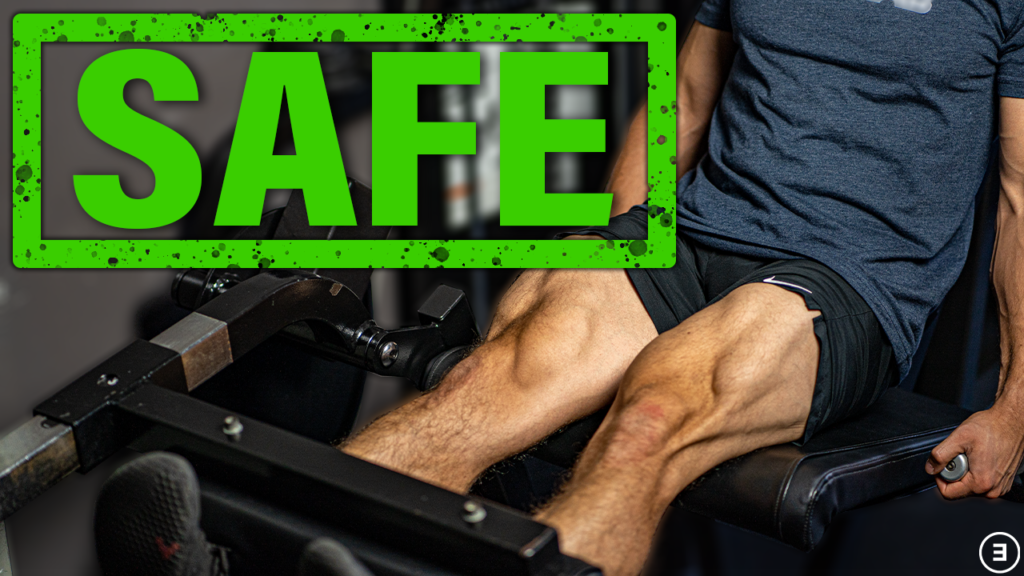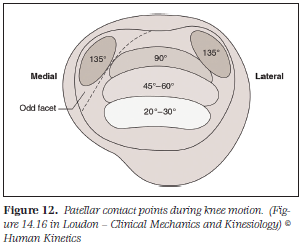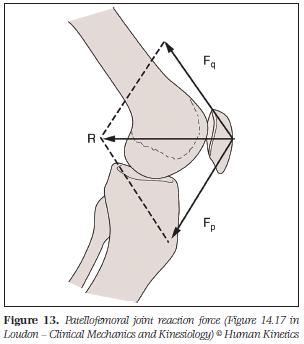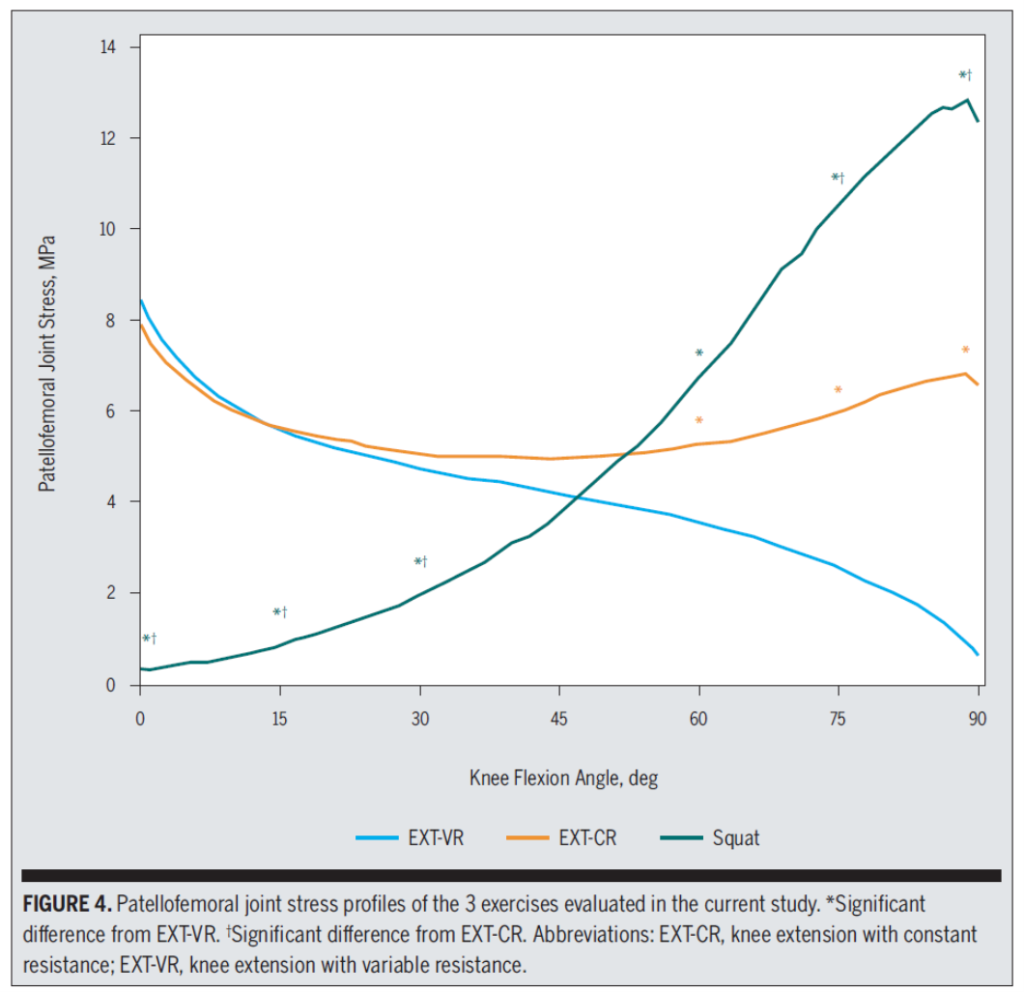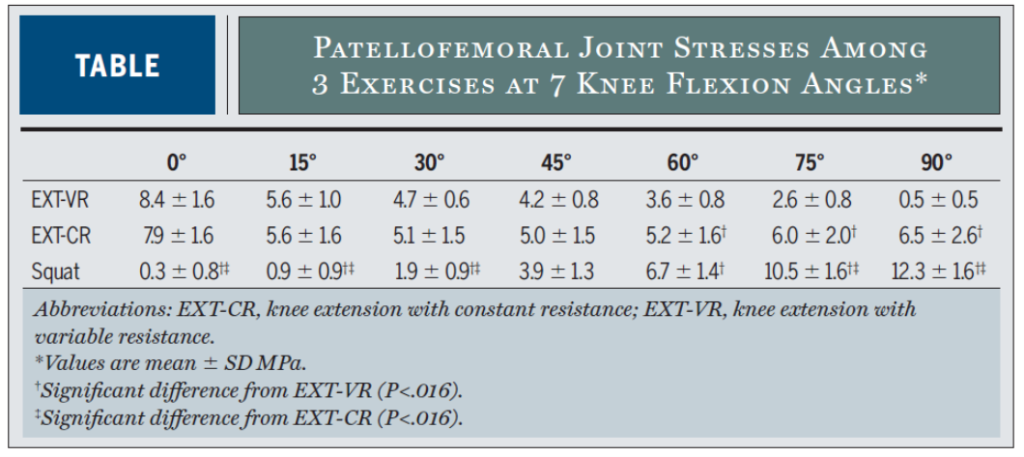The purpose of this blog is to answer the question: “Are leg extensions bad for your knees?” This blog will discuss patellofemoral joint stress, reaction force, contact area, and other relevant concepts. If you are looking for a more simplified explanation, please scroll to the bottom of this page to watch our YouTube video on the topic.
*Please note that many of the calculations for these studies were derived from Eijden et al. 1986 and 1987, but I have simplified much of this information for myself and the readers by utilizing information from the Neumann textbook.
Looking to improve your strength, range of motion, and power to enhance your function and performance? Check out our Knee Resilience program!
Patellofemoral Joint (PFJ) Stress
“Leg extensions are bad because they place too much stress on your knees.” This statement, or some iteration of it, is a common argument against the use of leg extensions, but how are the purveyors of this sentiment defining “stress” in this scenario? I imagine they don’t know.
Stress can be calculated by dividing force by area. In the case of this discussion, we’re specifically referring to the PFJ stress being equal to the PFJ joint reaction force divided by the PFJ contact area (PFJ stress = PFJ reaction force/PFJ contact area). Therefore, if the PFJ contact area remains constant while the PFJ reaction force increases, the PFJ stress would increase (more force per unit area). Similarly, if the PFJ reaction force remains constant while the PFJ contact area decreases, the PFJ stress would increase (still more force distributed per unit area). We’ll revisit PFJ stress in a bit, but let’s examine the PFJ reaction force and contact area.
Patellofemoral Joint Contact Area
The PFJ contact area refers to the amount that the patella articulates with the femur, and is largely dependent on the degree of knee flexion. For example, Huberti and Hayes 1984 determined that the PFJ contact area increased from 20 degrees of knee flexion (2.6 cm²) to 90 degrees of knee flexion (4.1 cm²). Powers et al. 1998 found that the PFJ contact area increased from 0 degrees of knee flexion to 60 degrees of knee flexion, and slightly dropped off between 60 and 90 degrees of knee flexion.
To simplify this for the sake of our discussion, the PFJ contact area is smaller between 0-30 degrees of knee flexion and larger between 60-90 degrees of knee flexion. Let’s return to our equation (PFJ stress = PFJ reaction force/PFJ contact area). If the PFJ reaction force theoretically remained the same throughout the entire range of motion, we would expect more PFJ stress towards terminal knee extension secondary to a smaller PFJ contact area, and less relative PFJ stress at 60-90 degrees of knee flexion secondary to a larger PFJ contact area.
Where that stress is distributed will also vary based on the degree of knee flexion as the part of the patella that articulates with the femur changes throughout the range of motion (Goodfellow et al. 1976).
Examine the figure below. It is a 2-D illustration of the PFJ reaction force during an isometric contraction of the quads. According to Eijden et al. 1986, “a force (Fq) exerted by the quadriceps muscle is counteracted by a force (Fp) in the patellar ligament. The resultant force of Fq and Fp, the patellar compression force, is balanced by a reaction force applied to the patella at the point of contact.” Some texts seem to use PFJ reaction force interchangeably with the patellar compression force, and we’ll do the same for the purpose of this blog. Think of R in the figure below as the PFJ reaction, or compression, force (in reality, forces will be balanced out via Newton’s 3rd law).
The PFJ reaction force is primarily influenced by two factors: knee flexion angle and quadriceps muscle force. This was confirmed in a paper by Wallace et al. in 2002. Greater external loads, and therefore greater knee extensor moments (quads working harder), and increases in knee flexion angle during barbell back squats led to increases in patellofemoral joint reaction forces.
So how do PFJ reaction forces and the PFJ contact area interact during squats, leg presses, and leg extensions to influence PFJ stress?
PFJ Stress Revisited
There are several studies that examine the PFJ stress and/or reaction force during weight bearing and non weight bearing exercises, but the two most informative papers are by Steinkamp et al. 1993 and Powers et al. 2014.
- Steinkamp et al. 1993
- Purpose: Compare isometric leg extensions (variable resistance) and leg presses of comparable loads in healthy subjects by evaluating knee moments, PFJ reaction (compressive) force, and PFJ stress at 0, 30, 60, and 90 degrees of knee flexion.
- Results:
- Knee moments: “The maximum knee moments occurred at 90 degrees of flexion and decreased consistently to 0 degrees of flexion during leg press exercise. During leg extension exercise, the maximum knee moments occurred at 0 degrees of flexion and declined to minimum at 90 degrees of flexion.” Nothing shocking here as this is what we would expect.
- PFJ Reaction Forces: “At 0 and 30 degrees of knee flexion, PFJ reaction forces were significantly greater in leg extension exercise than leg press exercise. At 60 and 90 degrees of knee flexion, PFJ reaction forces were significantly greater in leg press exercise than leg extension exercise.” Once again, no surprise. As stated above, the PFJ reaction force is expected to increase when the quads are working harder. However, the peak PFJ reaction force for the leg press was ~3 times higher than the leg extension.
- PFJ Stress (Force/Area): “At 0 and 30 degrees of knee flexion, PFJ stress values were significantly greater in leg extension exercise than leg press exercise. At 60 and 90 degrees of knee flexion, PFJ stress values were significantly greater in leg press exercise than leg extension exercise.” We’ll look at a graph of this in the next paper, but the magnitude of the stress was extremely similar between the two groups.
- Discussion: The study confirmed everything that we would expect. The PFJ stress is highest at 90 degrees of knee flexion for the leg press because the PFJ reaction force is high (quads working hard at greater knee flexion angle) but the PFJ contact area is large. It’s a relatively large force distributed over a relatively large area. The PFJ stress is highest at 0 degrees of knee flexion for the leg extension because the PFJ reaction force is highest and the PFJ contact area is smallest. Compared to the leg press though, it’s a relatively small force distributed over a relatively small area. Therefore, stress is nearly identical for the two movements at comparable loads, but occurs at different ranges of motion. Peak stress was actually slightly higher in the leg press group.
- Powers et al. 2014
- Purpose: Compare knee extension with variable resistance (ankle weight), knee extension with constant resistance (dynamometer), and squat with comparable effort, tempo, and range of motion in healthy individuals.
- Results: This is best visualized with the table and figure from the paper (open access on JOSPT).
As you can see from the data, the PFJ stress for the leg extension with variable resistance and squat demonstrated identical trends to the leg extension and leg press in the Steinkamp paper. On the other hand, the leg extension with constant resistance, which is what most people would use in the gym, had fairly moderate (relatively speaking) levels of stress throughout the range of motion. Overall, the peak PFJ stress was highest for the squat.
Based on this information, we can confidently debunk the myth that leg extensions are bad because they place too much stress on your knees. In fact, they may even place less stress on your patellofemoral joint at comparable loads or efforts than leg presses and squats.
Is Physical Stress Bad?
Why do we give a negative connotation to the word “stress”? Want stronger bones? Stress ‘em! Want bigger muscles? Stress ‘em! Want to improve cardiopulmonary function? Stress ‘em (heart and lungs)!
Stress isn’t good or bad. It just is. It can be the catalyst for positive or negative adaptations. Stress your muscles too little? Atrophy ensues. Stress your muscles too much? Maybe an injury occurs. Stress your muscles just right? Hello, hypertrophy.
So why do certain individuals feel the need to falsely dichotomize leg extensions as either “good” or “bad”? What happened to context? What happened to load, volume, frequency, etc.? What makes leg extensions inherently different than any other exercise? Humans can adapt to 1,000lb squats and jumping off of buildings, but we can’t do a set of 20 repetitions on the leg extension machine without our patellas popping off?
If you haven’t read “The Knee as a Biologic Transmission With an Envelope of Function” by Scott Dye or “Tissue Adaptation to Physical Stress: A Proposed ‘Physical Stress Theory’ to Guide Physical Therapist Practice, Education, and Research” by Michael Mueller and Katrina Maluf, start there. These papers will serve as frameworks for the discussion about any exercise being “good” or “bad”.
We all have a certain capacity for load at a given tissue based on a number of factors: injury history, training history, age, genetics, comorbidities, and the list is endless. Some of these factors are modifiable and some are non modifiable. We can increase or decrease our capacity by influencing the modifiable factors. I can’t squat 400lbs. If I tried, I’d injure myself. The squat itself isn’t bad, though. I just don’t have the capacity for it right now. But, with enough time and effort, I might be able to increase my capacity enough to do it. Tissues adapt!
What About Patellofemoral Pain?
I don’t see the scenario differently than pain at any other joint or region. Many authors suggest that individuals with patellofemoral pain should limit themselves to mini squats or leg extensions through half of the range of motion to minimize stress to the patellofemoral joint. I don’t necessarily agree.
Limiting the range of motion is one option, but it’s not the only option. There’s a simple solution: test it! If it’s tolerable, then there’s absolutely no reason to limit the range of motion. If it’s not tolerable, you can limit the range of motion. Or, you can alter load, frequency, volume, contraction type, etc., just like you would with any other exercise.
And if someone did have pain with leg extensions, that still doesn’t make the exercise bad. It just means that person can’t tolerate them at this exact moment.
Leg Extensions Summary
Leg extensions do not cause more stress on your knees than squats and leg presses, and aren’t inherently worse than any other exercise. We need to stop falsely dichotomizing movements as “good” or “bad”.
Thanks for reading. Check out the video and please leave any questions or comments below.
Looking to improve your strength, range of motion, and power to enhance your function and performance? Check out our Knee Resilience program!
Want to learn more? Check out some of our other similar blogs:
Leg Extensions: Safe after ACLR, Banded Leg Extension, Reverse Nordics
Thanks for reading. Check out the video and please leave any questions or comments below.


